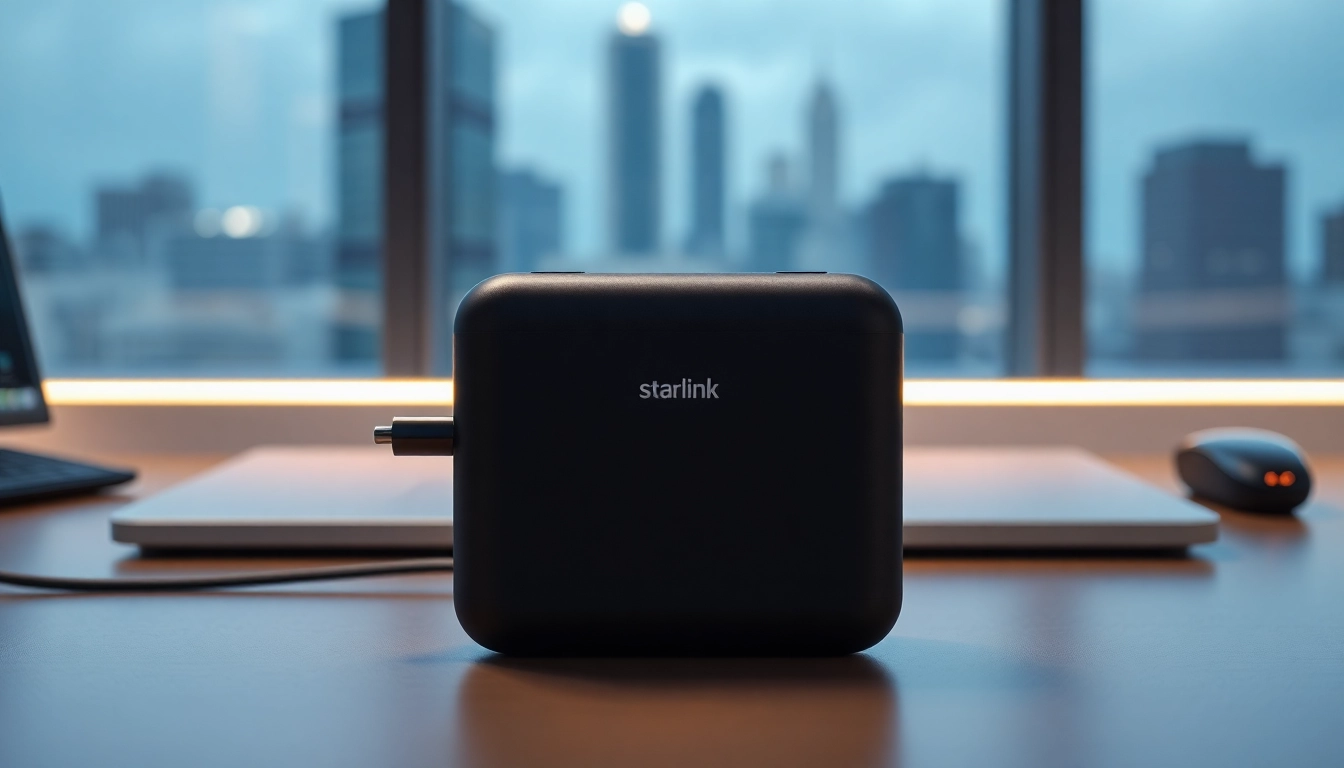Understanding AI Checkers
In today’s digital landscape, the contents we consume and share have grown increasingly sophisticated, particularly with the advent of artificial intelligence (AI). An ai checker is a powerful tool designed to determine whether text has been generated by AI algorithms or written by human authors. With the rise of AI-generated content, understanding these tools has become essential for content creators, educators, and businesses alike. This article provides an in-depth look at AI checkers, their functionality, benefits, comparisons, best practices, future directions, and real-world case studies to illustrate their effectiveness.
What is an AI Checker?
AI checkers are software applications or online services that analyze text to identify whether it was created by artificial intelligence systems, such as OpenAI’s GPT models, Google’s Gemini, or other AI writing tools. These tools use various algorithms and methods to assess the textual attributes, including patterns, word usage, and sentence structure. The goal is to distinguish human-written content from AI-generated text, thereby helping users maintain content authenticity and credibility.
How AI Checkers Work
The effectiveness of an AI checker primarily hinges on its underlying technology. Most AI checkers utilize a combination of natural language processing (NLP), machine learning models, and statistical analysis. Here’s a breakdown of how they generally work:
- Text Analysis: The checker parses the submitted text, looking for specific language patterns often common in AI-generated content.
- Model Training: AI checkers are trained on vast datasets containing examples of both AI-generated and human-written text. By learning from these datasets, they can better differentiate styles and patterns.
- Character and Style Recognition: Advanced AI checkers go beyond basic keyword analysis. They can evaluate sentence complexity, emotional tone, and coherence to detect subtle differences between AI and human writing.
- Output Generation: After analysis, the AI checker generates an output report that typically includes a percentage score indicating the likelihood of AI authorship and highlights specific text segments that contributed to that assessment.
Benefits of Using an AI Checker
Utilizing an AI checker offers several advantages across various sectors:
- Content Authenticity: Ensures that content claiming to be human-generated is indeed original, thus maintaining credibility with audiences.
- Plagiarism Prevention: Helps detect instances of AI-generated text that may overlap with existing content, promoting originality and fairness.
- Academic Integrity: Essential in educational settings to uphold standards in student submissions, ensuring compliance with academic guidelines.
- Improved Quality Control: Assists businesses in reviewing content for branding consistency and coherence before publication.
Comparing AI Checkers: Features and Tools
With a variety of AI checkers available today, understanding their features is crucial for selecting the best tool for your needs. Below, we will explore key features of popular AI checkers and compare their performance metrics.
Key Features of Popular AI Checkers
When evaluating AI checkers, several core features stand out:
- Accuracy Levels: The percentage accuracy of the detector when identifying AI-generated vs. human-generated content. Tools like Copyleaks claim over 99% accuracy.
- User-Friendliness: The intuitiveness of the interface and how quickly users can generate results.
- Supported Languages: Multilingual support allows users to check texts written in various languages, crucial for global applications.
- Output Detailing: How deeply the tool analyzes the text and the granularity of the report it produces, including which sections might appear suspicious.
Tool Comparisons: Performance Metrics
To effectively compare AI checkers, consider conducting a side-by-side evaluation based on specific performance metrics. Below are performance elements to take into account:
| AI Checker | Accuracy Rate | User Rating | Language Support | Free vs. Paid |
|---|---|---|---|---|
| ZeroGPT | 95% | 4.5/5 | 10+ | Free |
| QuillBot | 92% | 4.7/5 | 20+ | Free/Paid |
| Grammarly AI Checker | 90% | 4.6/5 | 1 | Paid |
Choosing the Right AI Checker for Your Needs
Selecting the most appropriate AI checker should involve consideration of your specific requirements, such as the volume of text you need to analyze and the context in which you are working. For instance:
- If you are a student or educator, a tool with strong academic integrity features and high accuracy rates will be essential.
- For businesses focusing on branding consistency, choose a checker that analyzes tone and style, not just authorship.
- Content creators may benefit from a checker that is quick and simple to use, allowing for swift analysis before publishing.
Using AI Checkers Effectively
To maximize the utility of AI checkers, it’s vital to follow best practices during content analysis. This section will cover effective usage and common pitfalls to avoid.
Best Practices for Content Analysis
Here are foundational practices for effectively utilizing AI checkers:
- Pre-Review Preparation: Before checking, ensure your content is formatted properly. Remove any unnecessary elements that may confuse the checker.
- Cross-Check Results: After obtaining results, cross-verify with additional tools. This multi-tool strategy can provide a consolidated summary of validity.
- Regular Use: Integrate AI checkers into your content creation workflow, using them consistently to maintain content quality over time.
Common Mistakes to Avoid
Some common errors include:
- Over-reliance on AI Checkers: Remember that while these tools are valuable, they should not be your sole method for content verification.
- Misinterpretation of Results: Understanding the output is crucial. A low human content percentage does not necessarily indicate poor quality.
- Ignoring Updates: As AI technologies evolve rapidly, ensure your chosen checker is updated regularly to adapt to new AI writing patterns.
Integrating AI Checkers Into Your Workflow
To effectively utilize AI checkers, integrating them into your broader content creation and review processes is essential. Consider these steps:
- Phase One – Drafting: Begin with writing your content traditionally, focusing on your unique voice and style.
- Phase Two – Initial Review: Use an AI checker early to catch any potential issues with AI generation before the content proceeds to editing.
- Phase Three – Final Approval: Prior to publishing, conduct a final check with the AI checker to ensure that the content meets your expected standard of authenticity.
The Future of AI Checkers and Content Verification
As AI technology continues to advance, the future landscape of AI checkers promises to be dynamic, featuring enhancements that will improve accuracy, user experience, and reliability.
Emerging Trends in AI Detection Technology
Trends shaping the future include:
- AI-Powered AI Detection: Emerging AI checker tools will increasingly incorporate their own AI models, enhancing their ability to detect new writing patterns generated by advanced AI systems.
- Integration with Other Verification Tools: Future AI checkers may combine with plagiarism detectors and grammar checking software, providing a holistic approach to content validation.
The Role of AI Checkers in Academic Integrity
AI checkers will play an increasingly pivotal role in upholding academic standards by:
- Identifying not just AI-generated submissions but also acting as educational tools, teaching students about content originality.
- Compliance with growing institutional policies regarding AI use in academic work.
Predictions for the Next Big Innovations
The oncoming innovations in AI detection technologies might include:
- Increased Accessibility: Tools that democratize access to AI detection technology, offering advanced features at little or no cost.
- Real-Time Detection: Implementing features that allow for live monitoring and feedback while composing content, rather than post-analysis only.
Case Studies: Success with AI Checkers
The practical application of AI checkers is critical for understanding their effectiveness. Below, we explore real-world examples and lessons learned from their usage.
Real-World Examples of AI Checkers in Action
1. A university implemented an AI checker as part of their submission process, reducing instances of AI-generated essays by more than 50% in just one semester.
2. A marketing firm utilized AI detection tools to vet client-generated content, leading to a 30% increase in customer satisfaction ratings due to improved authenticity.
Impact on Content Authenticity
Employing AI checkers directly influenced the quality of content created across various domains:
- Industry reports improved the validity of data presented by verifying sources and authorship.
- Publishers found story accuracy and author credibility significantly enhanced through layered checks involving AI detectors.
Lessons Learned and Best Strategies
Key takeaways from using AI checkers include:
- Investing in a reliable AI checker pays dividends in terms of audience trust and content integrity.
- Maintaining a balance between technology and human oversight ensures the best quality results, avoiding over-reliance on automated outputs alone.















Leave a Reply